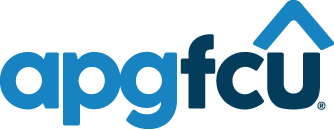 Buying a home is one of the most important financial decisions you'll make, and the process often begins with mortgage pre-approval. This is something you’ll want to do before you start searching for the perfect home.
Buying a home is one of the most important financial decisions you'll make, and the process often begins with mortgage pre-approval. This is something you’ll want to do before you start searching for the perfect home.
Here, we’ll take a look at some questions you may have about mortgage pre-approval to help you understand how it works, its benefits, and how it can give you an advantage in today’s competitive real estate market. Click below to quickly locate the answers you need.
- What Is Mortgage Pre-Approval?
- Why Get Pre-Approved for a Mortgage?
- How Do I Get Pre-Approved for a Mortgage Loan?
- When Should I Get Pre-Approved for a Mortgage?
- Why Are There Different Types of Mortgages?
- Mortgage Pre-Approval FAQs
1. What Is Mortgage Pre-Approval?
Mortgage pre-approval is a process where a lender does a preliminary review of your credit and finances to determine how much they are willing to loan you for a home. The lender will review your credit, income, employment history and your monthly debt payments.
2. Why Get Pre-Approved for a Mortgage?
Getting pre-approved for a mortgage lets you know how much you qualify to borrow before you start searching for the perfect home. It helps you save time so you can focus on homes that are within your price range. Mortgage pre-approval can also speed up the closing process because some of your financial information will have already been reviewed.
Your lender will also give you a mortgage pre-approval letter that lets sellers know you're a serious buyer. In a competitive real estate market, mortgage pre-approval is a must.
3. How Do I Get Pre-Approved for a Mortgage Loan?
The process for how to get approved for a mortgage loan is relatively simple, and it may take a few hours to a few days, depending on the lender.
Here are the steps to get pre-approved for a mortgage loan:
- Review Your Finances: Check to make sure you have a good credit score. Also, make sure you have your financial documents to prevent delays. Documents you may need include a government-issued ID, recent pay stubs, bank statements, tax returns, proof of assets, and information about your debts.
- Submit an Application: Fill out a mortgage application with your lender, online or in person per your preference.
- Provide Documentation: Submit any requested documentation. If you are applying online, you may be able to upload scanned images of your documents.
- Credit Check: A credit check will be done to assess your ability to repay the money you borrow.
- Receive Pre-Approval Letter: Your lender will give you a pre-approval letter stating how much you qualify to borrow.
4. When Should I Get Pre-Approved for a Mortgage?
Determining when to get pre-approved for a home loan depends on when you plan on starting your home search. Ideally, you want to have a mortgage pre-approval letter in hand before you view your first property.
It’s also a good idea to start reviewing your financial situation three to six months before you plan on buying a home. If you need to improve your credit score, you can pay down debt, correct errors on your credit reports, and limit hard inquiries. This will give your score some time to increase.
5. Why Are There Different Types of Mortgages?
Different home buyers have different needs, which is why lenders typically offer a variety of mortgage options. Mortgages have either fixed or variable interest rates, and they also have different down payment and credit score requirements. Be sure to compare your options before selecting a mortgage to make sure you choose the best one for your needs.
Common types of mortgages include:
- Fixed-Rate and ARM Conventional Loans: These mortgages can be used for your primary residence, a vacation home, rental homes, and other properties.
- Jumbo Loan: These are similar to conventional loans, except they are for loan amounts that are higher than the limits set by Fannie Mae and Freddie Mac.
- FHA Loan: These mortgages are backed by the Federal Housing Administration (FHA) and have lower down payment and credit score requirements than conventional loans. The home you are buying must be your primary residence.
- VA Loan: Backed by the U.S. Department of Veterans Affairs (VA), these mortgages were created to help active-duty service members, veterans, and eligible surviving spouses become homeowners. There is no down payment or private mortgage insurance (PMI) requirement.
- USDA Loan: These loans are backed by the U.S. Department of Agriculture (USDA) and were created to help people with low to moderate incomes become homeowners in certain rural areas. There is no down payment requirement, and applicants must meet income requirements to qualify.
Mortgage Pre-Approval FAQs
Now that we’ve covered everything you should know about mortgage pre-approval, let’s dive into some more details and commonly asked questions about the process.
How Much Can I Get Approved for a Mortgage Loan?
The amount you qualify to borrow for a home varies by lender and depends on your income, current debts, credit score, loan type, and other factors.
How Long Is a Mortgage Pre-Approval Good For?
Mortgage pre-approval is typically valid for 120 days.
What Happens if My Mortgage Pre-Approval Expires?
If your home search takes more than 120 days, you can renew your mortgage pre-approval. You may have to provide updated documents to ensure there has been no significant change in your financial situation.
How Long Does Mortgage Approval Take After Pre-Approval?
After receiving pre-approval, the mortgage approval process can take anywhere from 30 to 60 days.
Factors that can influence how long the process takes include:
- Type of property, i.e., single family, multi-unit, condominium
- Property State
- Response time to requests for additional documents
- Property appraisal
- Title search
- Mortgage underwriting
How Do I Get Pre-Approved for a VA Home Loan?
The process for how to get pre-approved for a VA home loan starts with obtaining a Certificate of Eligibility (COE) to prove you qualify. You can do this through the VA's website, by mail, or through your lender. After you find a lender that offers VA loans, you’ll need to go through the standard loan pre-approval process.
How Do I Increase the Mortgage Pre-Approval Amount?
The first step in increasing your mortgage pre-approval amount is to talk to your lender. Each lender will have its own criteria.
Some things your lender may recommend include:
- Increase your income
- Reduce your debt
- Improve your credit score
- Put down a larger down payment
- Choose a longer loan term
Mortgage Pre-Approval: An Important First Step Toward Homeownership
Getting pre-approved for a mortgage isn't something you should skip. The process is fast and easy, and it can improve the homebuying experience by making your search more focused. It could also give you an edge in a competitive market.
Are you thinking about purchasing your first home or upgrading to a new home? With our competitive rates, homeownership may be more affordable than you think. Take a look at our low mortgage rates and flexible terms to see how we can help you save on your dream home!

